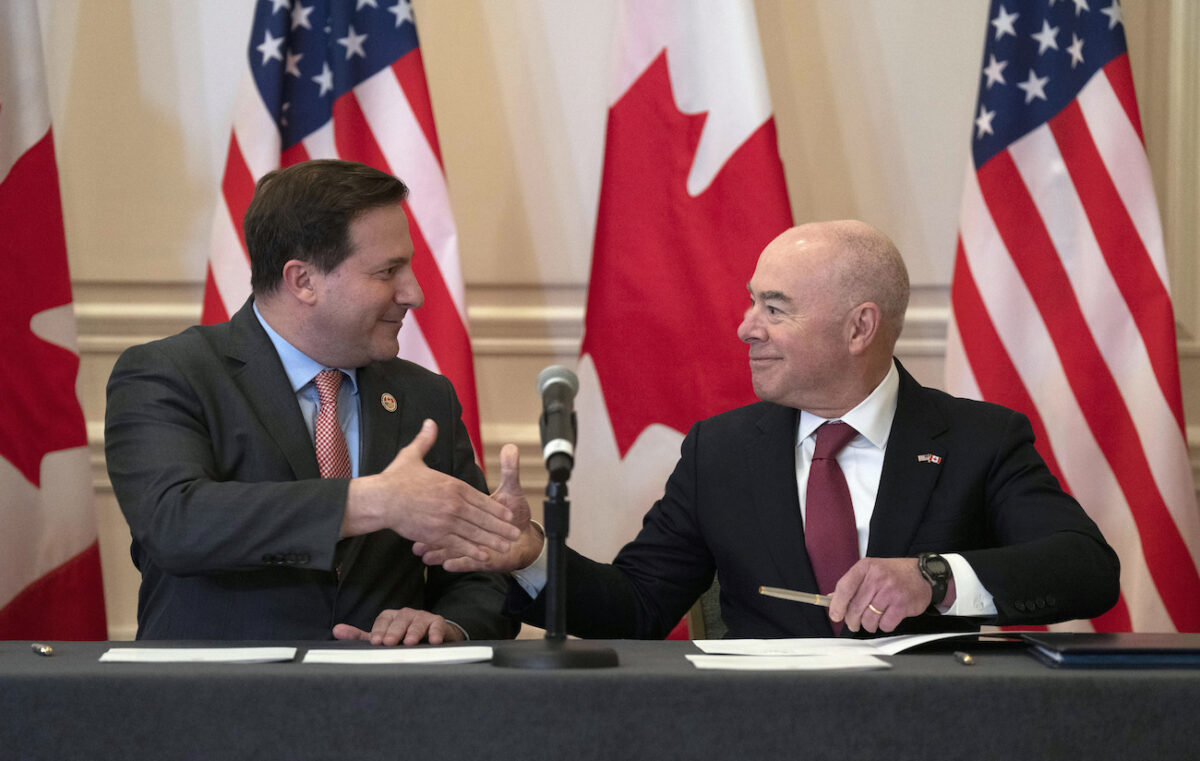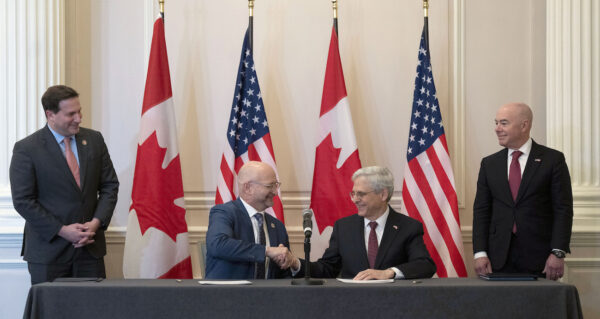


The United States and Canada signed four agreements in Ottawa on Friday focused on reducing cross-border crime, including one that involves increased tracing of guns that are intercepted at the U.S.–Canada border.
The move is intended to enhance efforts to stop firearms trafficking to Canada from the United States, officials from both countries said.
Canada’s Border Services Agency (CBSA) will cooperate with the U.S. Bureau of Alcohol, Tobacco, Firearms, and Explosives (ATF) to trace guns seized at the border to see who purchased them and whether they were previously used in crimes.
“Canada and the United States have agreed to strengthen the bilateral cooperation to reduce gun violence,” Canada’s Minister of Public Safety Marco Mendicino said. “It means making even more progress on the tracing of illegal guns so that we can hold those criminals and organized criminal networks to account.”
“It means more joint investigations into gun smuggling and trafficking. It means even more exchanging of intelligence and information between our law enforcement agencies,” he added.
The agreement on firearms will allow Canada to target “ghost guns,” he said. Gangs often use such guns because they are privately manufactured, often via use of 3D printers, which means they are not registered and are untraceable.
Mendicino signed the four agreements with U.S. Secretary of Homeland Security Alejandro while meeting at the 2023 Canada–U.S. Cross-Border Crime Forum (CBCF), the second such forum of its kind. Also present were Canada’s Minister of Justice and Attorney General David Lametti, and U.S. Attorney General Merrick Garland.
The United States requires sellers of guns to record the serial numbers of the guns they sell, and who purchased them. Tracing provides the ATF with key information that the agency can use to investigate and prosecute people who bought the guns that were later sold illegally or smuggled.
“Data and information sharing are powerful tools in the fight against gun violence,” said Garland.
Ontario, Canada’s most populous province, traces nearly all the handguns involved in crimes, and in 2021 more than 80 percent of those that were able to be traced were found to have come from the United States.
Last year, the governments of both countries introduced new action intended to tackle crimes involving guns.
In Canada, Prime Minister Justin Trudeau ordered a freeze on the sale, transfer, and importation of handguns into Canada, as well as a ban on sales of large-capacity magazines. The measure became law in October 2022.
Meanwhile, President Joe Biden announced in April 2022 an executive action to stop “ghost guns” from being sold, by requiring retailers to run background checks before selling kits that contain parts that can be assembled into a gun and to have such kits be registered. The rule also includes an effort to serialize ghost guns already in circulation. It also updates serialization and background check laws for guns with split receivers. The rule went into effect in August 2022.
At the Cross Border Crime Forum, the four officials also agreed to enhance their collaboration to address opioid trafficking, money laundering, including the use of cryptocurrency to fund illegal activities, and human smuggling, among other issues.
A joint statement said law enforcement from both the United States and Canada would be trained to have a shared understanding of both nations’ privacy laws.
“It’s all about meeting the moment, meeting the changes that occur and addressing them in real time—sharing actionable, relevant information in real time,” said Mayorkas.
Regarding opioid trafficking, Garland said authorities will track the ingredients used to create the deadly drug and the flow of its components from China.
Reuters and The Associated Press contributed to this report.

